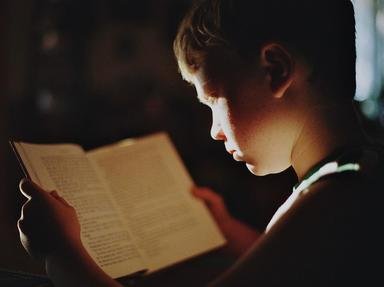Quiz Answer Key and Fun Facts
1. United States: Which author's novel about a Lithuanian family struggling in Packingtown led to the creation of the Pure Food and Drug Act?
2. Mexico: Which work by Octavio Paz is a collection of nine essays, including "The Day of the Dead" and "The Dialectic of Solitude"?
3. Chile: Which breakout novel by Isabel Allende describes the Trueba family women over three generations?
4. Trinidad: What name completes the title of V.S. Naipaul's famous 1961 novel, "A House for _________"?
5. Colombia: "One Hundred Years of Solitude," by Gabriel Garcia Marquez, chronicles the life of the Buendia family in what fictional town?
6. United Kingdom: According to Matthew Arnold, "ignorant armies clash" at what titular locale on the English channel?
7. Italy: What play, written by Luigi Pirandello, has characters including The Stepdaughter and The Father?
8. France: In "Candide," which long-lost love does the title character search for all across Europe before finding that her wondrous beauty has disappeared?
9. Czech Republic: Which author of strange tales like "The Trial" lends his name to an adjective meaning senseless and disorienting?
10. (Ancient) Greece: In what Aristophanes comedy do the title animals chant "Brecece-cecs"?
11. Algeria: Albert Camus wrote "The Plague," which takes place in what fictional Algerian city? Crossword puzzlers might know this one pretty well!
12. Nigeria: What is the name of the sequel to Chinua Achebe's famous "Things Fall Apart"?
13. South Africa: Which protagonist of Alan Paton's "Cry, the Beloved Country" lives in Ixopo?
14. Iran: Which ancient Persian author, famous for his "Rubaiyat", also found a way to geometrically solve cubic equations?
15. India: Which novel, which begins with the protagonists falling out of a plane, earned Salman Rushdie a fatwa from the Ayatollah Khomeini?
16. Russia: What author created Luzhin, Dunia, Alyosha, Smerdyakov, "The Underground Man", Prince Myshkin, Zosima, and Lizaveta?
17. China: Which of the following is not one of the "Four Great Classic Novels of Chinese Literature", which were written between the fourteenth and eighteenth centuries AD?
18. Japan: "The Tale of Genji", often considered the world's first novel, is a classic by what female author?
19. Australia: Who wrote "Schindler's Ark", which would later become the inspiration for Steven Spielburg's successful Holocaust movie?
20. Oceania: Keri Hulme, author of "The Bone People", hails from what Pacific island country?
Source: Author
adams627
This quiz was reviewed by FunTrivia editor
MotherGoose before going online.
Any errors found in FunTrivia content are routinely corrected through our feedback system.
